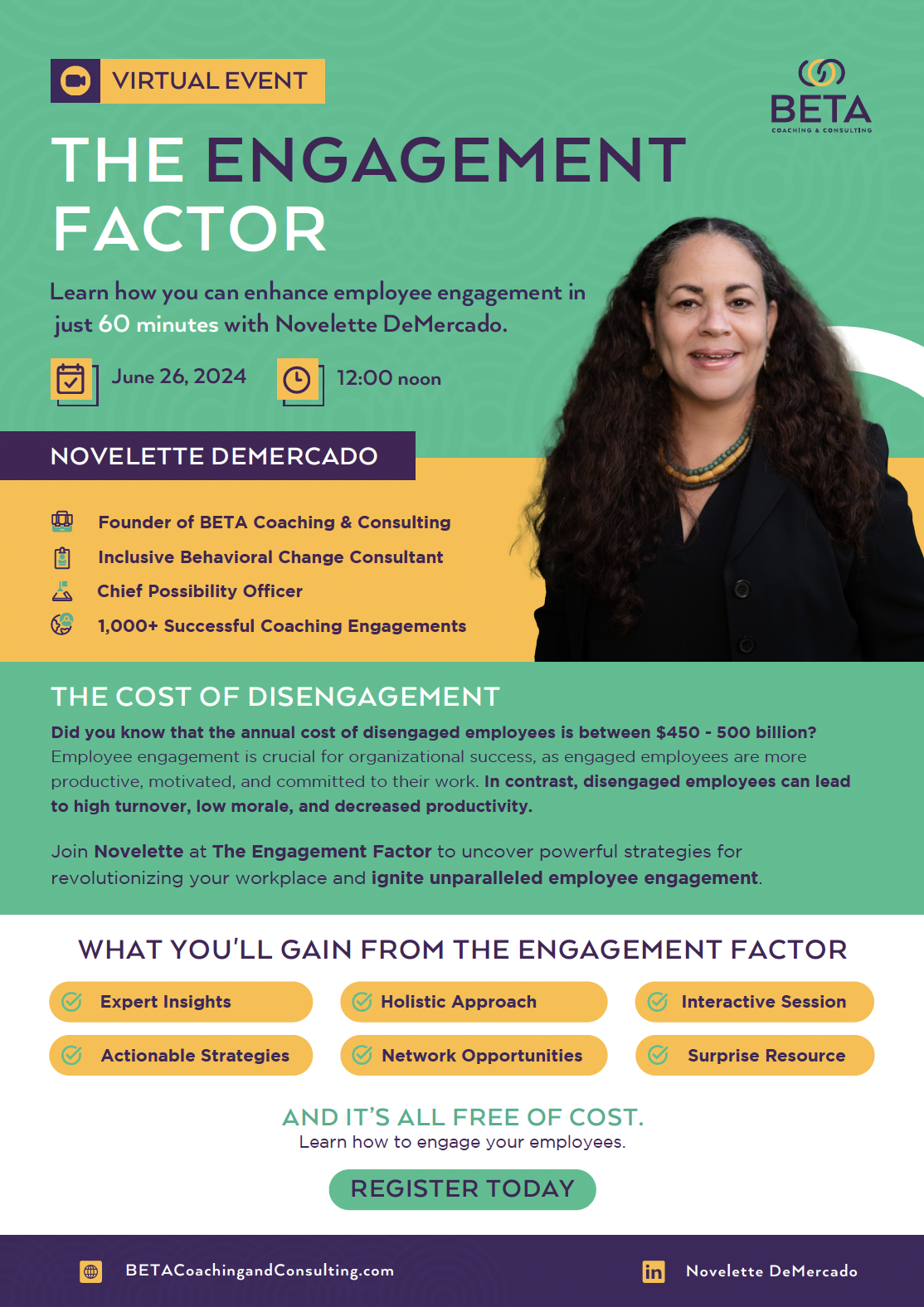Our society is at an inflection point. To thrive in this new era, both employees and employers must redefine their relationship. Employee engagement, a topic explored extensively in academic articles, is no longer a passing trend. It’s a critical factor in organizational success.
 To navigate this landscape effectively, we must understand the nuances of employee engagement. This knowledge will guide our actions and highlight the importance of a deeper understanding of this vital aspect of organizational dynamics.
To navigate this landscape effectively, we must understand the nuances of employee engagement. This knowledge will guide our actions and highlight the importance of a deeper understanding of this vital aspect of organizational dynamics.
By fostering a supportive environment that prioritizes and supports employee well-being, organizations can significantly boost engagement and enhance the overall employee experience.
Although employers recognize the link between well-being and employee satisfaction and retention, they often struggle to keep employees engaged in well-being programs. This is not merely about providing superficial benefits like mindfulness and yoga classes or gym reimbursements.
It is about effective well-being strategies that are both inclusive and tailored to employees’ individual needs. This approach not only benefits employees but also the organization. By leveraging data and implementing strategies that support both parties, organizations can create a more positive and dynamic work environment.
Building on this foundation, let’s explore the role of organizational culture in fostering employee engagement.
Organizations are made up of individuals and groups with shared identities, norms, and purposes. Employees are more likely to feel motivated and engaged when they are empowered to contribute meaningfully, connect with their colleagues, and work for an organization that treats them fairly and ethically, while rewarding them for their contributions.
Engagement is a function of the cultural value-add — shaping the energy, behaviors, and attitudes over and above personal preferences and styles.
Finally, let’s consider the crucial role of leadership in unlocking employee engagement.
 Effective leadership is essential for unlocking employee engagement. Leaders must understand their team’s needs and create an environment where employees feel valued, supported, and motivated. This involves actively listening to employees, providing clear expectations and feedback, and demonstrating a commitment to work-life integration.
Effective leadership is essential for unlocking employee engagement. Leaders must understand their team’s needs and create an environment where employees feel valued, supported, and motivated. This involves actively listening to employees, providing clear expectations and feedback, and demonstrating a commitment to work-life integration.
By prioritizing their team’s needs, leaders can create a positive work environment that fosters employee retention, motivation, and engagement. This also empowers employees to feel a sense of agency. When employees feel valued, recognized, and supported, they are more likely to:
- Feel appreciated and rewarded: Both financially and psychologically.
- Be motivated and enthusiastic: To achieve personal and organizational goals and to utilize their strengths.
- Take ownership: Of their professional development and well-being.
- Engage in open and honest communication: With their leaders and colleagues.
There is no one-size-fits-all approach to employee engagement. Given the diversity of the global workforce, organizations must tailor their approaches to meet the unique needs of their employees. However, certain behaviors can help foster engagement across the board. These include:
- Active listening and clear communication: Understanding employees’ needs and providing clear guidance about the organization’s needs.
- Collaborative partnerships: Creating a sense of mutual respect and shared responsibility.
- Professional development: Investing in employees’ growth and career advancement.”
For me, choice is at the heart of employee engagement — saying yes to an organizational value because it aligns with one’s values. It is about meaningful interactions and curating a mutually beneficial partnership.
How are you building the bridge to cross and deepen your understanding of the employee engagement landscape at your organization?
Request a copy of BETA Coaching & Consulting White Paper: The Power of Connecting Purpose, which offers approaches to cultivating an ecosystem to support employee engagement, by emailing novelette@betacoachingconsulting.com.

 Beyond the business turnaround detailed in James Rhee‘s Red Helicopter: Lead Change with Kindness, the book beautifully showcases the immigrant perspective that shaped his successful leadership at Ashley Stewart. Rhee’s approach, grounded in kindness and strategic thinking, not only saved the company from bankruptcy but also serves as a heartfelt tribute to his parents.
Beyond the business turnaround detailed in James Rhee‘s Red Helicopter: Lead Change with Kindness, the book beautifully showcases the immigrant perspective that shaped his successful leadership at Ashley Stewart. Rhee’s approach, grounded in kindness and strategic thinking, not only saved the company from bankruptcy but also serves as a heartfelt tribute to his parents.
I have flagged many pages in the book — sharing these two standout excerpts below:
To undermine agency. … How many of us have ever been properly taught about the interconnectedness of systems like wellness, cognitive science, finance, economics, and corporate law?
Few bosses slow down long enough to ask, what is my intent here? … Can people do their best work and keep their eyes on the future when fear overcomes their bodies and triggers their fight-or-flight reflex?
This book acknowledges the multiplicity of human existence, which does not always get sufficient airtime in our culture, especially in the business world.
By emphasizing qualities such as kindness, interconnectedness, the balance of jeong (affection) and han (deep sorrow), and agency, organizations can create a culture of care and trust that drives success.
And yes, Rhee affirms we can lead with kindness and still positively impact the bottom line.
He offers many business analogies — framed both from the organizational and individual perspectives. I was personally taken with the T-Account (below is a snapshot from the book):

And I look forward to completing my T-Account this fall.
What will you include in your T-Account?
Books that nourished my mind this summer:

What Have You Read This Summer That You Loved?


 Billions of individuals, including yourself, are busy working. Many toil
Billions of individuals, including yourself, are busy working. Many toil Although engagement is linked to performance (such as quiet quitting, performance appraisal scores, and turnover), it does not directly impact individuals’ performance; it is an organizational imperative involving all stakeholders.
Although engagement is linked to performance (such as quiet quitting, performance appraisal scores, and turnover), it does not directly impact individuals’ performance; it is an organizational imperative involving all stakeholders. After reviewing the Employee Engagement Framework below, consider how you are meaningfully engaged in your work life.
After reviewing the Employee Engagement Framework below, consider how you are meaningfully engaged in your work life. 




 Saying they have created a culture of care where employees can be themselves and contribute fully isn’t enough for an organization. Their actions throughout the company must consistently reflect this value.
Saying they have created a culture of care where employees can be themselves and contribute fully isn’t enough for an organization. Their actions throughout the company must consistently reflect this value. And there were those leaders, through their behavior (from micromanagement and bullying to sexist and racist tropes), that resulted in my stepping back in how to choose to engage.
And there were those leaders, through their behavior (from micromanagement and bullying to sexist and racist tropes), that resulted in my stepping back in how to choose to engage.
 There is no universal formula for engaging employees. Given the workforce’s global nature and diverse needs, some behaviors can help amplify engagement across an enterprise.
There is no universal formula for engaging employees. Given the workforce’s global nature and diverse needs, some behaviors can help amplify engagement across an enterprise.


